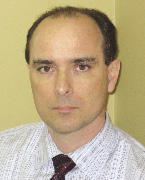Puritan Flood Restoration has been on the cutting edge of innovative restorative drying techniques for years. With the skillful use of advanced technologies we have saved property owners and managers throughout New England millions of dollars and countless hours of down time for more than two decades.
Years ago, if your property sustained water damage from a flood, roof leak, burst pipes or other any other cause, a "wet carpet drying service" would essentially dry the carpets, leaving everything else in the property to "air" dry. Unfortunately, this approach resulted in carpet disintegration, the costly necessity to replace walls and floors as well as dealing with the lasting effects of harmful environmental hazards such as air-borne mold, allergens and other biological contamination.
Since those days, we have incorporated an arsenal of high-tech equipment into our flood abatement services that allows us to restore a property to a dry, healthy state with the highest level of safety and precision while passing on a huge savings of time and money to the customer. Over the years we have successfully restored thousands of New England properties from flood damage including hotels, schools and universities, condominium complexes and private residences. We also preserved a Boston-based library's million dollar collection of rare books and historically significant documents from a catastrophic flood with our state-of-the-art restoration approach.
Flood abatement has come a long way from the "mopping up" days. When we are called to a property that has sustained water damage, we employ a four step process:
1. Inspect. We first make a flood-related safety inspection. This involves checking for dangerous conditions such as structural damage, electrical hazards, pathogenic bacterial, mold and mildew. Using a hydrosensor moisture detector, we also determine the extent of water migration within a facility.
2. Remove water. This step involves removing as much water as possible via pumps, portable extraction units and truck mounted extraction systems. We move or elevate any and all building contents that might be damaged permanently. Books, documents and other printed materials that are water soaked are quickly frozen in anticipation of further remediation. Freezing will immediately arrest the growth of mold and mildew, thus preserving fragile pages and leather bindings.
3. Disinfect. If a carpet is not glued down, all underlayment is disinfected to prevent mold and mildew growth.
4. Dry. Commercial grade dehumidifiers and air movers are set up and activated.
Standing water and surface water removal is only the beginning of proper flood restoration. Usually only 10 to 15% of water damage actually can be seen—the rest is hidden between walls, ceilings and floors. When water is left trapped in building cavities, mold and mildew grow and will eventually affect the integrity of walls and other structural elements. Partially dried floors will buckle and cup. Wood that remains saturated with a moisture content of 30% or higher will succumb to dry rot. In the short term, indoor air quality will be unhealthy. Water-bourne contaminates can permeate rugs, furniture, floors and walls, creating conditions that can become not only offensive but toxic.
Benefits of Technology: Saving Time and Money
All of the issues connected with hidden water are now quickly and effectively addressed with the use of Infrared technology. State-of-the-art equipment allows us to literally see through walls to detect water damage that is trapped within walls and floors. Our professionals are trained in analyzing the images from thermographic cameras, so that we identify where water has traveled within a building without damaging the structure. This technology allows us to survey broad areas while pinpointing moisture sources. Even wet insulation within the roof, wall, crawl space or foundation structure can be detected quickly and accurately. Wet insulation not only can lead to mold concerns, but also creates a favorable environment for pest infestations. Information gained from an infrared scan allows the affected areas to be repaired quickly, minimizing costs by only replacing and repairing what is needed instead of the entire area.
An amazing 70% of all insurance claims are water related. Before you find yourself under water, make sure that you carefully choose a flood abatement specialist. Make sure they are Institution of Inspection Cleaning and Restoration Certified. Ask about their procedures. Ask if their equipment and manpower can handle your job. Call their references. Ask for "before and after" photos. Do they really have 24/7 service? If water damaged property is restored ineffectively, a three-day problem can become a long-term headache.
Paul Daniele is a principal of Puritan Flood Restoration, Needham, Mass.
Tags:
Puritan Flood Restoration: Experts on the innovative restorative drying techniques
June 03, 2009 - Owners Developers & Managers
 (1).png)








